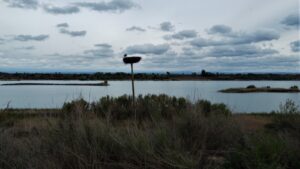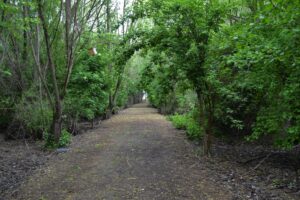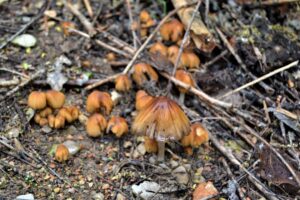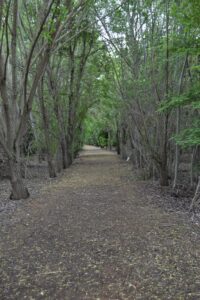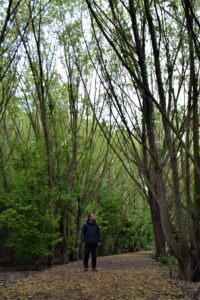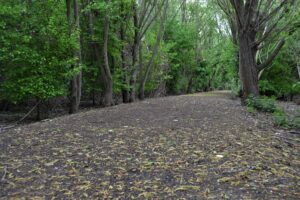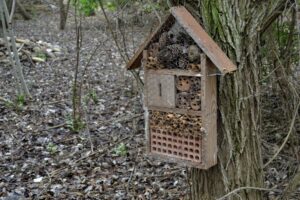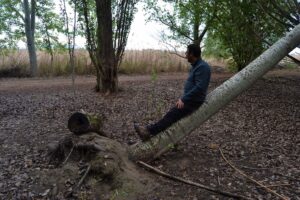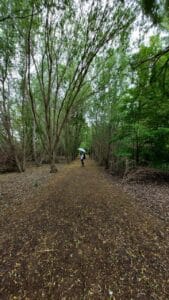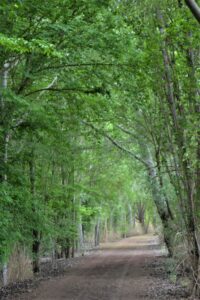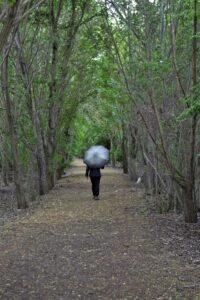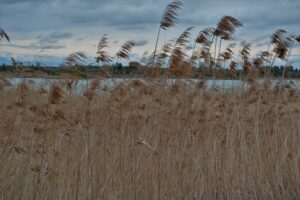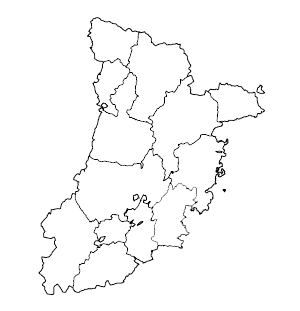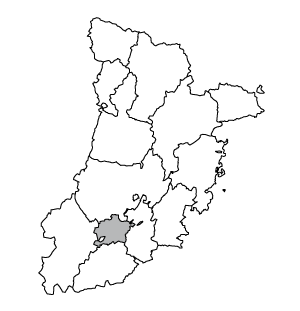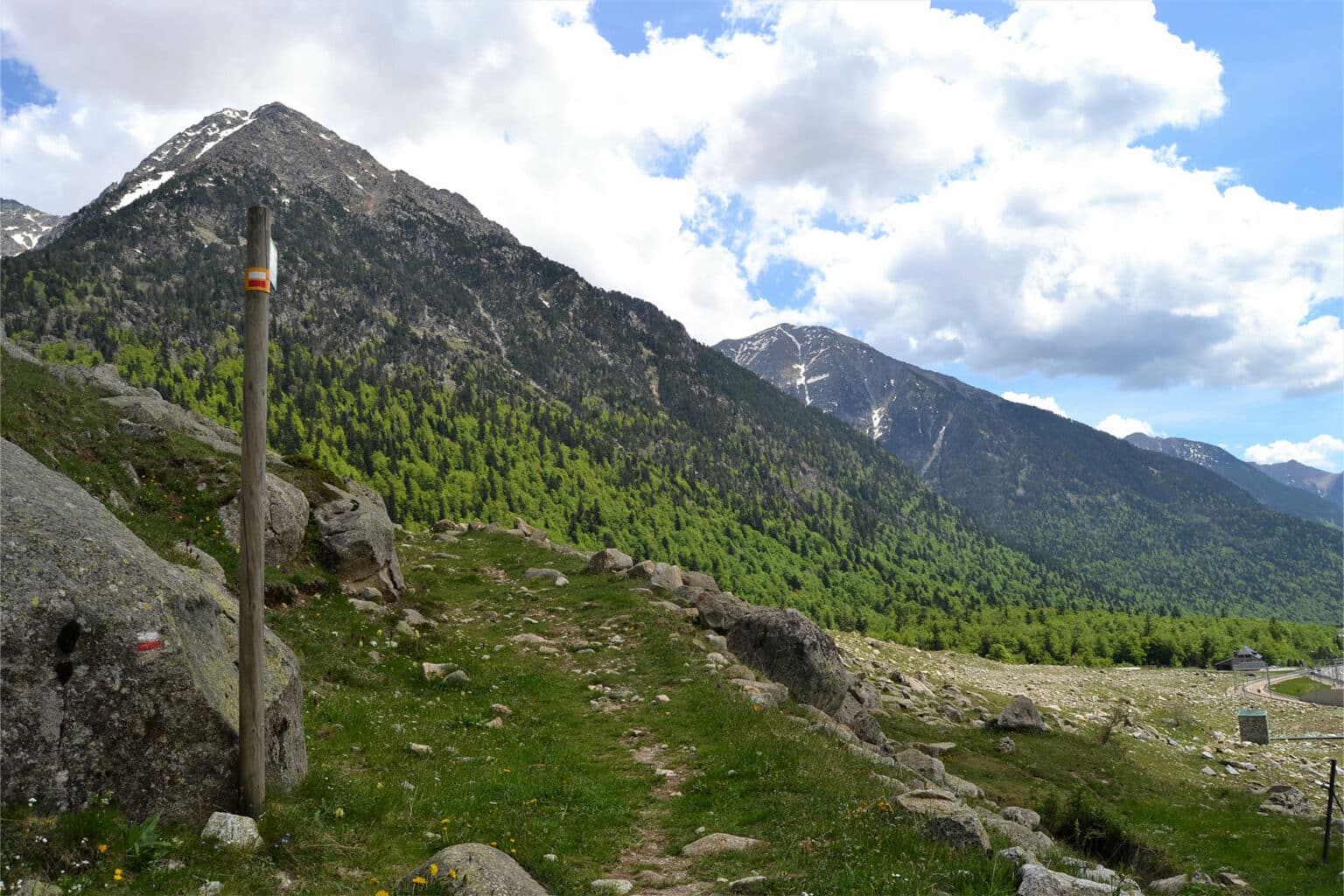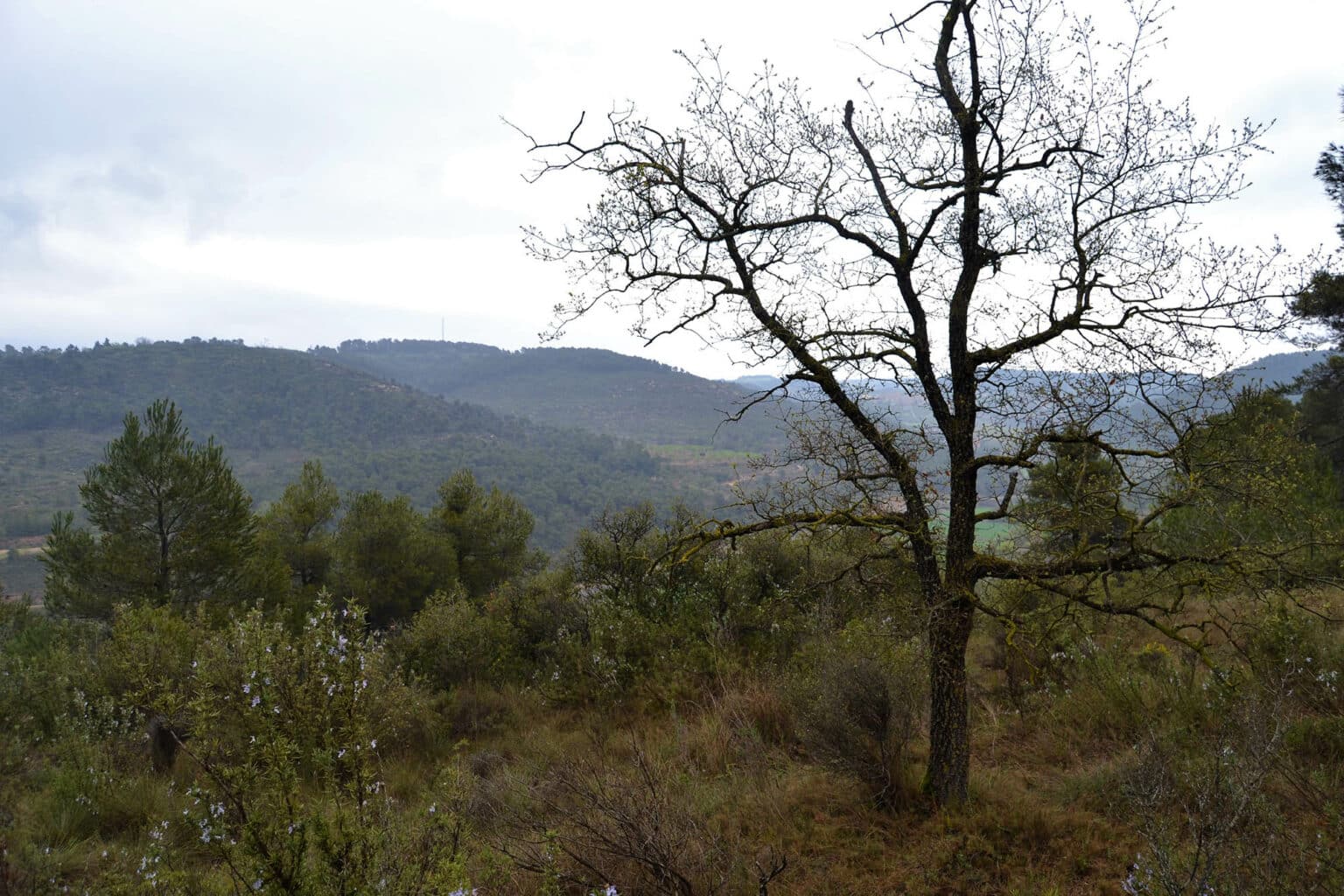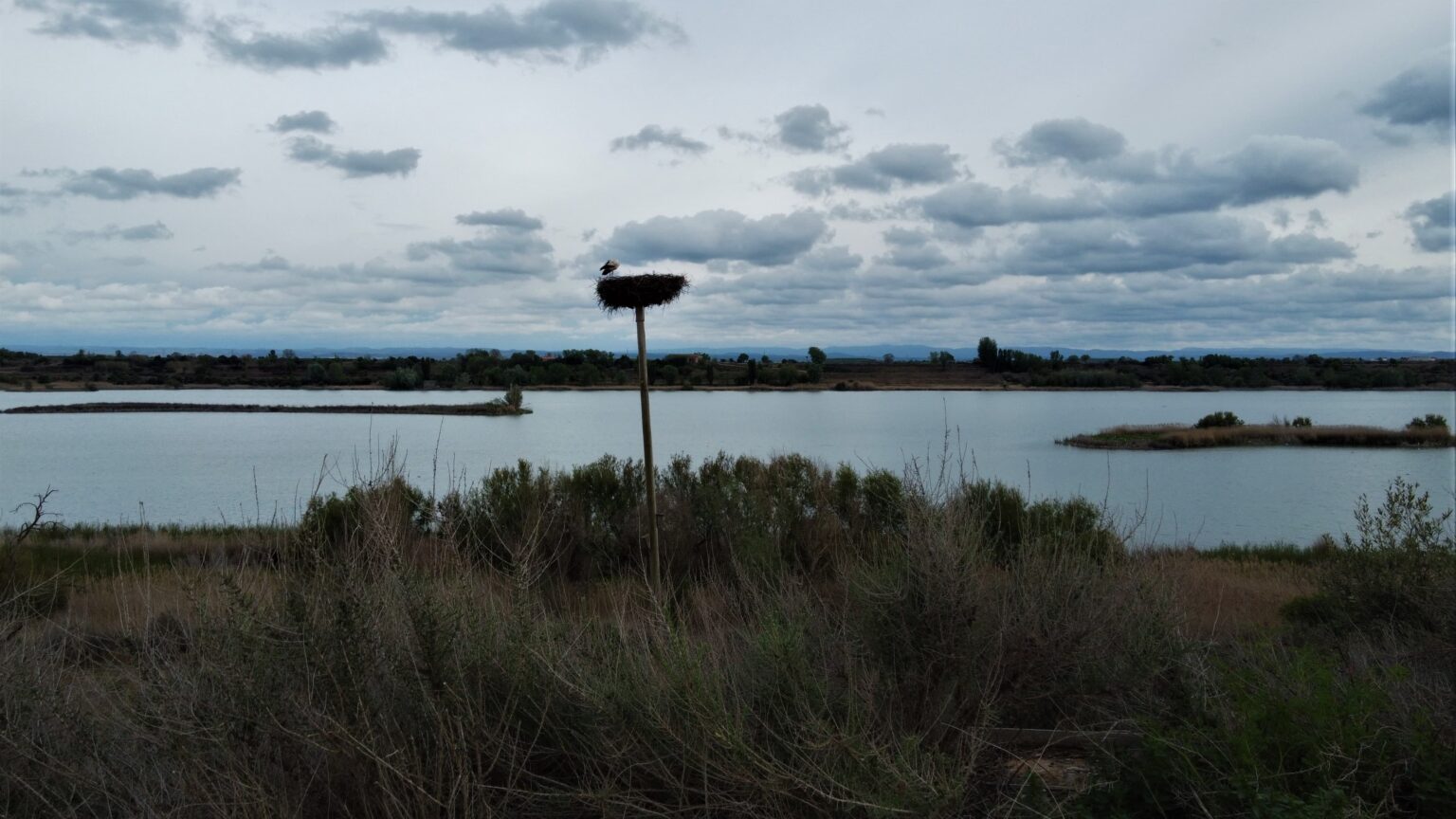FOREST BATHS
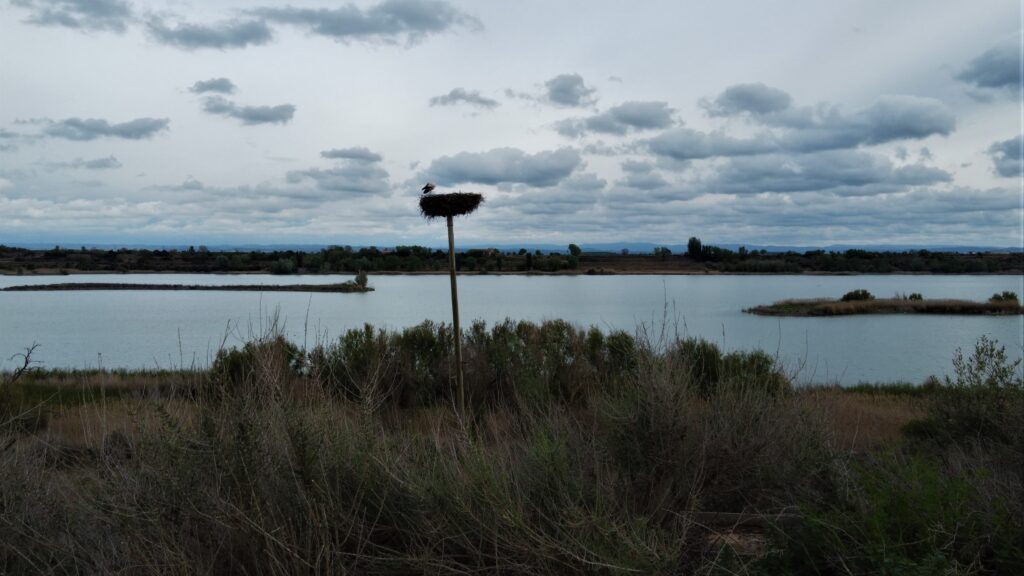
The bosquet de Ca l'Aragonès at the Estany d'Ivars i Vila-Sana Pool
The Estany d’Ivars i Vila-sana pool is shared between the municipal districts of Ivars d’Urgell and Vila-sana. To get there, you must take the A-2 to either Ivars d’Urgell or Vila-sana and you will then find signposts to the pool. It is possible to access it via one of two entrances; these are rural tracks that are not difficult for motor vehicles and do not limit their access. The two entrances have good parking areas, information huts and interpretation panels and are the starting points for the main nature route that connects them. At the entrance on the Ivars side, you will find Cal Sinen. This is a reconstructed farmhouse which now houses the Centre for Interpreting the Estany d’Ivars i Vila-sana pool.
This pool was initially drained, in 1951, to convert the surrounding land into agricultural fields, but it was later recovered and restored to the natural space that it had once been. The project for ecological restoration began in the 1990s and work was resumed in 2005, when it was reflooded. Work has since been carried out to foster the development of its flora and fauna and to manage the full recovery of this natural system. This area of El Pla d’Urgell really stands out, within a comarca (local district) that is characterised as an area rich in irrigation facilities. It is also known for its fogs, which sometimes cover the territory for days on end, and for a markedly Mediterranean climate, with a tendency towards arid continental conditions, with very little rainfall. It is worth adding a few historical notes about this emblematic pool, which was originally 2,500 metres long and 800 metres wide, with a depth of 4 metres at its deepest point. Curiously, despite this being a fresh water lake, the strong evaporation in this area meant that during dry periods, a layer of salt used to form, which rose from the bottom of the pool and concentrated at its surface. This formation of salt deposits could have been a consequence of the endorreic origins of the pool: it was a type of lake from which the water collected tended to evaporate. The resulting salt was then sold.
It is not at all surprising that today, the recovered pool has a calming influence upon the local territory. It has a water surface area of 126 hectares, but its depth is no greater than 2 metres. It is fed by the Canal d’Urgell and drains into the River Corb. By size, this is the largest inland pool in Catalonia and it naturally attracts a very interesting biological diversity and one that is important for the conservation of numerous species of fauna and, above all, aquatic birds, of which there are over 255 different species. Around its periphery, there is a 5-kilometre nature itinerary equipped with vantage points, hides, jetties, interpretation panels, picnic areas and information points.
To reach the area and do some forest bathing, it is recommendable to leave your car on the Vila-sana side, because this is the car park which is nearest the riverside forest of Ca l’Aragonès. On leaving your car, you will immediately see the pool and a sign indicating the direction of the forest, off to the right. You only have to follow the sign for the Rest Area and Amphibian Pond; you cannot miss it.
The space for forest bathing
The walk through the riverside forest of Ca l’Aragonès is like being at an open-air concert. Despite its relatively small size, this is a very interesting area in which the presence of fauna, and particularly the birds that live there, is very evident. If you pay attention to the birdsong, you will find it fascinating; it is part of their language and contains the sound cues that they use to communicate. When you observe their communication, you will note that it is complex: they use numerous vocalisations, with different meanings and objectives, and their relationship with the environment is very important. The birds perform specific functions within ecological networks and serve as excellent bioindicators. When you observe the surroundings, you will see that the birds are not the only creatures that have their own language; all the fauna have their own languages, and there is even an interspecies language which they can use to help each other. How do you see yourself in this environment?
It is interesting to know that, in this forest, action is being taken to diversify the food chain and to attract more types of animals. For example, the introduction of insect hotels, nesting boxes for birds, blocks of stones for small rodents and reptiles, are just some of the actions that have been taken to encourage a greater diversity of species. The result has been very positive; there are even bats which have come from El Montsec to feed on the mosquitoes! It is worth adding that the Estany d’Ivars pool is also something akin to a paradise for bats; of 33 species present in Catalonia, around 10 can be found here.
Despite the human intervention, efforts have been made to leave the pool as wild as possible. At times, when walking, it is possible to see water that enters from the irrigation canal, via some of its irrigation channels, while traces of crustaceans have also been observed along the path. Traces of food are also frequent, and if you look around, and a little higher up, you will see how some birds make very attractive nests, both close to the water and high up at the top of the trees. The amphibian pond, which is where the signs take visitors, is very close by. This was artificially created to encourage the presence of odonata (types of dragonflies) and different types of amphibians (frogs, water snakes and pool turtles, which were in danger of extinction), etc.
The vegetation of the Ca l’Aragonès forest is typical of riverside locations. Along the 800 metres of the route, you will find poplars, with silver poplars (Populus alba) amongst other denominations, such as black polars (Populus nigra), ash (Fraxinus), elder and black elder (Sambucus nigra). At the amphibian pond, at the end of the route, there is also the picnic area, which is an ideal place at which to either start or end your forest bathing experience.
The walk through the wood implies submerging yourself in a very singular micro-universe, in which a new world will emerge around you. It is well-worth awakening all your senses, feeling present and connecting with the forest and everything that lives within it. Observe nature, live with, and respect, the fauna, breathe healthily, and absorb and enjoy the atmosphere.
Map:
https://estanyivarsvilasana.cat/
